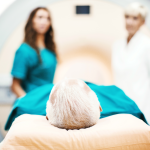 Understanding the Limitations of MRI Scans
Understanding the Limitations of MRI Scans
MRI scans have become a popular diagnostic tool for low back pain, as they provide detailed images of the spine and surrounding structures. However, a recent study conducted at the National Guard Hospital in Jeddah found that MRI scans may not always provide an accurate diagnosis for low back pain. The study showed that 72% of patients had negative MRI findings, meaning the scan did not explain their symptoms. In addition, 28% of patients had positive MRI findings that were not associated with their symptoms. This highlights the limitations of relying solely on MRI scans for low back pain diagnosis.
The Importance of a Complete Physical Examination
A complete physical examination is crucial for identifying the cause of low back pain. It involves a thorough evaluation of the spine, muscles, and nerves, as well as a review of medical history and lifestyle factors. This allows for a more holistic approach to diagnosis, as it takes into account all possible contributing factors. The same study at the National Guard Hospital found that only 27.5% of patients received a complete physical examination, and of those, only 12% had positive findings. This suggests that a significant number of patients may be missing out on a proper diagnosis by solely relying on MRI scans.
The Benefits of a Holistic Approach
As a chiropractor, my approach to managing low back pain is always holistic. This means looking at the body as a whole and addressing any underlying issues that may be contributing to the pain. A complete physical examination allows for a more accurate diagnosis, which in turn leads to more effective treatment. It also allows for a more personalized treatment plan, as each individual’s body and lifestyle are unique.
Natural and Holistic Treatment Options
Another benefit of a complete physical examination is that it can help identify natural and holistic treatment options for low back pain. In the same study, it was found that 88.2% of patients who had an MRI were managed conservatively, while only 6.7% underwent surgery. This highlights the importance of exploring non-invasive treatment options, such as chiropractic care, physical therapy, and lifestyle modifications, before resorting to surgery.
Trust in Your Body and Your Healthcare Provider
In conclusion, while MRI scans can be a useful tool in diagnosing low back pain, they should not be solely relied upon. A complete physical examination is crucial for accurate diagnosis and effective treatment. As a chiropractor, I believe in the power of a holistic approach and the importance of building trust between the patient and healthcare provider. By understanding the limitations of MRI scans and the benefits of a complete physical examination, we can work together towards a healthier and pain-free life.
This information is intended for educational purposes only and is not meant to substitute for medical care or to prescribe treatment for any specific health condition.
